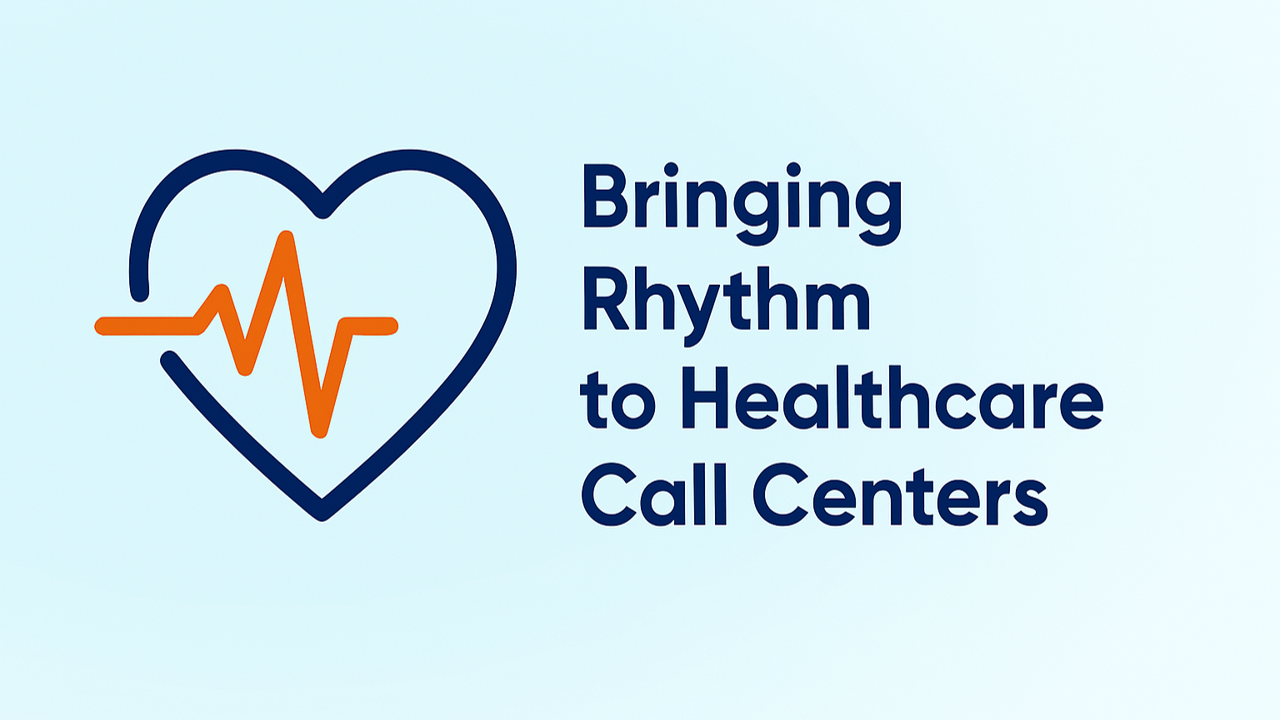
A whopping 88% of patients say their choice of a healthcare provider hinges not on the visit itself, but on the level of customer service they receive before and after the visit. Patients want streamlined and seamless experiences—it’s as simple as that.
On the other end of the spectrum, providers desperately want to escape their staffing nightmare. The #2 worry of medical practices in 2023, according to Medical Economics, is hiring and retaining staff.
In today's highly competitive healthcare landscape, both staffing and customer service can be the difference between failure and success.
So wouldn’t it be great if you could solve both problems at the same time?
Fantastic news: You can.
The key to success, the magical ingredient, is your first contact resolution (FCR) rate. FCR needs to become your most vital metric.
Enhancing your FCR can reduce your call volume by 35% - 50%. By resolving customer issues during the first interaction, your team can handle more calls and queries more efficiently. Our clients often see a 25% - 50% reduction in after-call effort—including fewer outbound calls and inbound calls—which translates to ~30% fewer total calls per patient.
When you optimize your FCR, you will disintegrate staffing pressures, slash calls, boost patient satisfaction, and electrify your staff’s morale. This wonder metric has the potential to transform your entire operation.
What is first contact resolution?
FCR measures the effectiveness of your customer service team. It represents the percentage of customer issues resolved during the first interaction without the need for any follow-up.
Let’s say a patient calls your clinic to inquire about their test results. If your staff member says, "Oh, you saw Dr. Angelo? Give me your question, and I'll send it to his care team," it may seem efficient in the short-term and make that staff member’s metrics look good, but unfortunately this technique prolongs the resolution process, creates more work, and annoys patients.
A stellar FCR rate, on the other hand, means that the patient's issue is resolved before they hang up the phone or exit their digital chat session. That means patients receive seamless and quick service, which in turn engenders greater satisfaction and loyalty. If your organization is plagued by unhappy customers, dismal reviews, and relentless patient leakage, then enhancing your FCR rate is the single best way to smash these problems.
Why is first contact resolution important for staffing?
If you’re battling staffing woes, FCR makes for an amazing weapon. Many organizations focus solely on reducing their average handle time (AHT), but they don’t realize how much extra work that entails.
For instance, any calls or chats that are not handled on the first contact require additional efforts, including escalation, forwarding, follow-up, investigation, and future calls and phone-tag. These steps cause delay, wasted time, extra documentation, confusion, and expense.
If you improve your FCR, you can maintain a smaller team that is 100% dedicated to providing exceptional service. By reducing the number of repeat calls and follow-ups, your staff can focus on managing new customer concerns, which in turn streamlines the customer service experience on the front-end.
A stellar FCR rate doesn’t just make things simpler for your patients; it also makes things easier for your staff. Your staffers will feel empowered, capable, and confident as they work, which means they will resolve issues quickly and precisely.
Why is first contact resolution important for patients?
From a customer's perspective, FCR is essential because it directly enhances their experience. When patients contact your support team, they want their problem resolved as fast and seamlessly as possible. By addressing their concerns during the first interaction, you demonstrate that you value their time and that you are committed to providing gold-standard customer service.
Take the case of a patient who calls your clinic to request a prescription refill. If your staff can handle this request during the first call, the patient will likely be satisfied with the service and feel that their needs have been met. And that translates to excellent online reviews.
Conversely, if the patient’s call is redirected elsewhere—or even worse, they must leave a message and receive a call back—this aggravates the patient, and they may abandon the call altogether and start looking for a new provider who offers the level of customer service that they’ve come to expect in other industries.
What customers really want, more than anything, is streamlined experiences. Studies across various industries have shown that customer satisfaction strongly correlates with FCR. Improving your FCR rate will therefore dramatically boost your satisfaction scores and strengthen your patient relationships.
Improving your FCR with Modular Templates
The best way to optimize your FCR is with Modular Templates. It can be difficult, even impossible, to achieve optimal FCR without Modular Templates, which are designed to improve efficiency, communication, and coordination within an organization. They are particularly useful in the healthcare sector.
The concept of Modular Templates is inspired by Eli Whitney's idea of interchangeable parts, which revolutionized the automotive industry and later influenced call centers. Basically, imagine a healthcare organization that creates standardized processes and procedures that can be easily updated, expanded, or swapped out as needed. They start by establishing simple standards, which serve as the foundation for their templates. With these templates in place, the organization can identify the variables between locations, doctors, visit reasons, insurances, and more. These variables become “modular”: the agent follows the same process for each call, but the variables substitute depending on the context.
This allows tremendous streamlining of your processes, and it breaks down internal silos and promotes cross-departmental coordination. These templates can be customized to cater to the unique intricacies of each healthcare organization, including practice, location, and services. The primary aim is to improve communication and collaboration across different departments and teams, which ultimately leads to a higher FCR rate and a more satisfying customer service experience.
How do Modular Templates enhance first contact resolution?
Modular templates enable a higher FCR rate by providing your customer service team with the tools and resources they need to handle variations in scheduling, refills, or needs. This allows your team to quickly identify and resolve problems during the first interaction without having to send the patient to someone else for confirmation or research.
By implementing modular templates, your team can:
- Quickly access relevant information and resources to resolve customer issues.
- Provide consistent, high-quality service across all team members.
- Streamline the customer service process, reducing the need for follow-up calls and repeat interactions.
Incorporating Modular Templates into your customer service strategy creates a more efficient and effective support team, ultimately resulting in higher FCR rates and improved customer satisfaction.
Breaking bad habits & excuses: real-world steps to first contact resolution success
Achieving a high FCR rate requires a commitment to breaking bad habits and overcoming common excuses that hinder your team's performance. These obstacles include:
- Insufficient training or resources for your customer service team.
- Inefficient processes that lead to longer call times and unresolved issues.
- A lack of focus on FCR as a key performance metric.
To overcome these challenges, it is essential to prioritize FCR as a primary goal for your customer service team. This may involve investing in additional training, implementing new processes, and setting clear expectations for your team members. By focusing on FCR, you can demonstrate your commitment to providing exceptional customer service and ultimately improve your overall performance.
Taking action: measure first contact resolution & implement Modular Templates
Now that you understand why Modular Templates dramatically enhance care coordination and efficiency, it's time to take action.
Here's a step-by-step guide to help you get started:
- Assess your current processes: Begin by evaluating your existing procedures and identifying areas that could benefit from standardization and modularization. This assessment will help you pinpoint the most critical processes to focus on when creating your templates.
- Establish Simple Standards: If you haven’t yet taken steps from our prior blogs, go back and review them now. You must develop a set of guidelines and best practices that will serve as the foundation for your Modular Templates. These standards should be based on internal expertise, and you should also solicit feedback from staff members who are involved in the processes you want to improve.
- Create the templates: Once you have your standards in place, start designing your Modular Templates. These should be easy to understand, update, and customize. Be sure to involve relevant stakeholders in the creation process, which will ensure the templates meet everyone’s needs and expectations.
- Train your staff: Introduce your new Modular Templates to your team and provide comprehensive training on how to use them effectively. This step is crucial to ensure that your staff members are comfortable with the new processes and can seamlessly adapt to them.
- Monitor and refine: Regularly evaluate the effectiveness of your Modular Templates by tracking relevant performance metrics, such as first call resolution rates and patient satisfaction scores. Use this data to make adjustments and improvements to your templates as needed.
- Encourage collaboration: Foster a culture of teamwork and cross-departmental communication by encouraging staff members to share their experiences and insights related to the Modular Templates. This will help you identify any gaps or issues that need to be addressed and promote a sense of ownership among your team.
By following these steps, you can successfully implement Modular Templates in your healthcare organization and enjoy the benefits of improved efficiency, coordination, and care. This process requires ongoing effort and commitment, so be prepared to continuously evaluate and refine your templates to ensure they remain effective and relevant.
To learn more about how to solve your staffing problems and harmonize your patient access ==>
Posted By

Stephen Dean is COO of Keona Health, where he’s spent 13 years building AI systems that transform patient access. Before “agentic AI” was a term, his team was deploying autonomous systems that now handle millions of patient conversations annually.
Related Post
November 19, 2024
heading into 2025, healthcare organizations face increasing pressure to digitize...
October 23, 2023
imagine your call center as the heart of your healthcare system. every patient flows...



